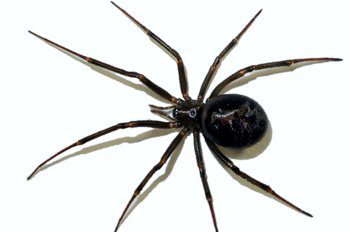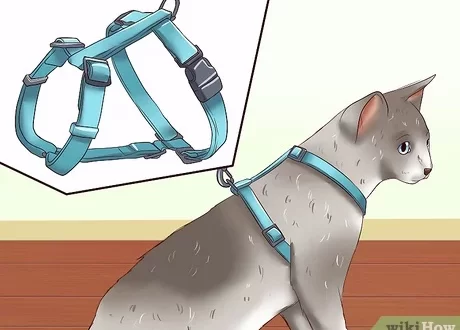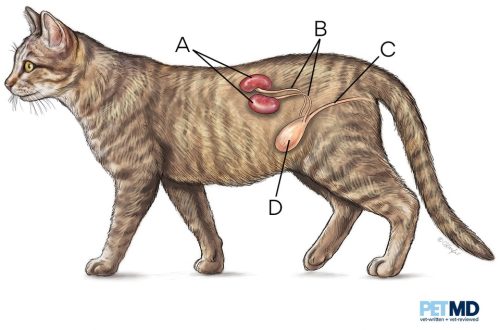
What is a karakurt spider and why should you be afraid of it
Many consider the snake to be the most insidious and dangerous creature in the world. However, a small spider lives on our planet, whose bite is 15 times more poisonous than a snake bite. This is a karakurt, which is considered one of the most poisonous spiders on earth, and therefore it is worth getting to know it better.
Contents
What is a spider karakurt
The name of the spider is translated as “kara” (black) and “kurt” (worm). In the Kalmyk language, karakurt sounds like “black Widow”. This name fully justifies itself. The thing is that after mating, the spiders devour their partners, and this happens with each subsequent gentleman.
Females differ greatly from males. The average size of a spider is 10-20 mm, and the male is usually quite small, only 4-7 mm. They are black in color with thirteen red dots on the upper side of the abdomen. It is these spots that are their hallmark. Interestingly, reaching puberty, these spots may disappear.
Karakurt spiders have a very powerful “chemical weapon” – poison. They need it to hunt various insects. In addition, with its help, they destroy steppe animals, for example, ground squirrels, in whose holes they then begin to twist their web. If they are not disturbed, they will not attack, but in case of danger they begin to attack instantly.
Habitat
Very often this spider can be found in the following places:
- Desert zones of Kazakhstan.
- Steppes of the Astrakhan region.
- Middle Asia.
- Afghanistan.
- Iran.
- The banks of the Yenisei.
- Mediterranean coast.
- Southern Europe.
- North Africa.
- Crimea.
- Black Sea region.
There are known cases of their discovery in the south of the Urals, in the territories bordering Kazakhstan. Spiders began to be found in Azerbaijan, as well as in the Rostov region. If the weather is very hot, karakurts can move to the northern regions, for example, in the suburbs. They can also be found at higher latitudes, but they live there only until the onset of winter. Ideal conditions for their living hot summer and warm autumn.
Karakurts live mainly in the steppes, in ditches, salt marshes, on the slopes of ravines, in abandoned villages. They weave a web in the cracks of the earth, in potholes, rodent burrows, where in July-August they attach cocoons with egg laying. A week later, spiderlings hatch from the eggs, however, only the next spring they begin to crawl out of the cocoon. The air temperature at this time reaches 30 degrees. In autumn, all adult representatives of karakurts die.
These spiders feed on hedgehogs, wasps, and rider beetles. Flocks of sheep often trample their clutches.
Reproduction
Karakurt spiders are highly prolific and every 10-12 years their rapid growth is observed. To lay eggs, the female spins a web in cracks in the soil, rodent burrows, and in the drainage of ventilation systems. Spiderlings spend the winter in a cocoon, and crawl out of it in April. In June, the spiders become sexually mature. As soon as hot weather sets in, karakurts begin to look for sheltered places for mating. Then the females begin to look for places to lay eggs.
What is the danger of a karakurt bite
The most poisonous are sexually mature females, and males are not able to bite through human skin. In July-August, the peak of spider activity occurs, when the migration of females begins. Their venom is 15 times stronger than that of the most venomous snake. They move very quickly, and they can attack imperceptibly.
Females never attack first. This happens only if she is accidentally crushed, and she, defending herself, can bite. Mostly this happens at night during outdoor recreation, less often during the day.
At the site of the bite of the spider first appears little red dotbut it disappears very quickly. The bite itself is not very painful, however, when the poison begins to act, there is severe pain in this place. A person has a strong mental excitement, he is covered by panic and fear of death, spasms and suffocation. Victims with a diseased heart may not be able to endure such a condition.
After 10-15 minutes, there are very severe pains in the abdomen, chest and lower back, the legs begin to be taken away. There is vomiting, headache and dizziness. The face becomes cyanotic, the pulse begins to slow down and arrhythmia occurs, protein appears in the urine. After that, the patient lethargy occurs, however, severe pain gives him great discomfort. After 5 days, rashes appear on the skin, and the condition improves slightly. The final recovery occurs after 3 weeks, within a month the patient does not leave the weakness.
Treatment
If you do not come to the rescue in a timely manner, the victim may die.
- As soon as the bite occurs, you can burn this place with a cigarette or a match. Most importantly, this must be done within two minutes of the bite. The poison has not yet had time to be absorbed, and heating destroys it. This method helps well in the remote steppe, when it will take a very long time to wait for medical help.
- The most effective treatment is anti-karakurt serum, which should be administered intramuscularly as soon as possible. After that, the symptoms subside, and after 3-4 days recovery occurs.
- Rubbing with alcohol, enemas help well.
- The victim must be given water or warm tea to drink, but little by little, because the bite worsens the excretion of urine.
- It is necessary to inject intravenously 10-12 ml of 33% ethanol every 5-6 hours.
- To relieve pain, it is recommended to inject painkillers, for example, analgin, diphenhydramine, ketanol.
- You can also do an intravenous infusion of a 2-3% solution of potassium permanganate.
Fortunately, deaths from the bite of a karakurt spider are quite rare.
Prevention
The karakurt spider can live in forest glades, parks, squares, summer cottages. That is why, when going for a walk, it is necessary observe the following safety measures:
- If such spiders are known to live in the area, it is better not to spend the night in the open.
- Contact of sleeping places with the inner walls of tents should be avoided.
- If it becomes necessary to stop for a halt or overnight, you should carefully examine the territory.
- If burrows or depressions under stones are found where spiders can live, they should be covered with earth.
- Clothing should be long-sleeved, and the head should be covered with a scarf or other headgear.
- If you have a night in a tent, you need to carefully inspect the sleeping place before going to bed, as well as a backpack, clothes and shoes, where karakurt spiders can penetrate.
- It is better to use the canopy, tucking it under the bed.
- Small grooves can be made around the tent.
- Always wear footwear that will protect your feet from venomous bites.
- If suddenly a karakurt spider is found on clothes, you can not press it or pick it up. It is best to knock it down with a click or just shake it off to the ground.
Conclusion
From the bites of spiders of karakurt very all living things suffer, and horses and camels almost always die. When these spiders begin their intensive reproduction, animal husbandry suffers great losses due to the mass loss of livestock. That is why, to destroy the spiders of karakurt, the soil is sprayed with hexachloran and other poisons.
It should be take precautionswhen it is necessary to go out into nature in places where karakurt spiders are very common. In case of a bite, first aid should be provided immediately and urgently contact a medical facility.





